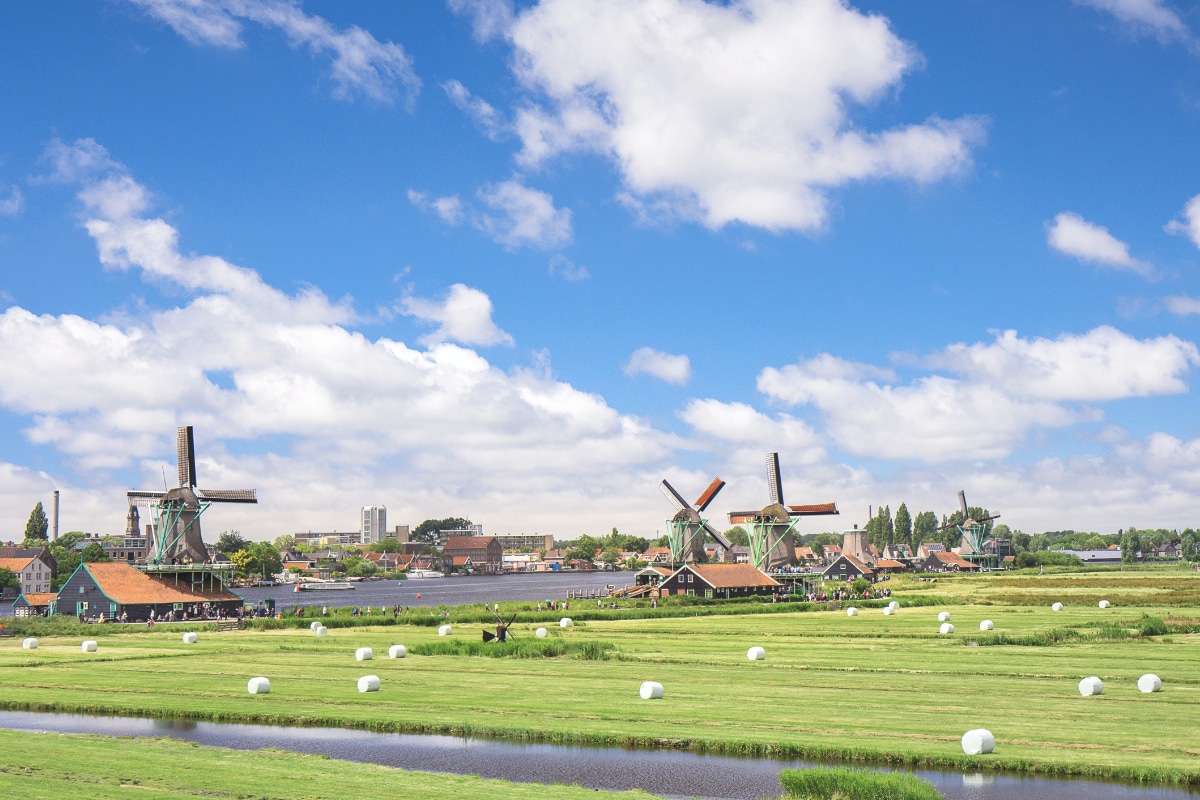
More summer showers, a considerably higher sea level and severe drought: climate change is not going to affect our little country.
This is evident from a new KNMI report published today. The report – which is based on the latest IPCC report and on KNMI’s own research – leaves no room for doubt. The climate in the Netherlands is also changing faster and faster and that entails formidable climate risks.
The sea level
One of the better-known risks for our already largely submerged country is, of course, the rise in sea level. In 2014, the KNMI predicted that the sea level – if greenhouse gas emissions do not decrease – would be 1 meter higher in the year 2100 than at the beginning of this century. But the institute is now coming back to that. Based on the most recent data, KNMI has to conclude that sea level rise has been underestimated; the latest report predicts a sea level rise of 1.2 meters by 2100.
Incidentally, the sea level rise predicted for the Netherlands does not only depend on global emissions, but also on the way in which the Antarctic ice sheet will respond. And there is still a lot of uncertainty about that. It also translates into uncertainty about sea level rise; for example, if the Antarctic ice sheet melts at an accelerated rate in 2100, the sea level could also be 2 meters higher than at the beginning of this century.
Extreme showers and drought
But our country is confronted with more climate risks, the report shows. For example, the heaviest summer showers become more extreme under the influence of climate change. Paradoxically, warming simultaneously increases the chance of dry springs and summers. The risk of prolonged heat also increases.
In recent decades, the temperature, solar radiation, precipitation, evaporation and the precipitation deficit have increased. Meanwhile, the wind speed has decreased. While the average temperature between 1961 and 1990 was still about 9.4 degrees Celsius, it was 10.1 degrees Celsius between 1981 and 2010. And between 1991 and 2020 10.5 degrees Celsius. And where between 1961 and 1990 there was an average of 780 millimeters of precipitation per year, between 1991 and 2020 it was already 851 millimeters. At the same time, however, evaporation also increased; from an average of 564 millimeters per year between 1961 and 1990 to 603 millimeters per year between 1991 and 2020.
Rivers
Global warming can cause problems not only on the coast. Also deeper inland, changes occur in river areas. This increases the chance of high water in winter. While in the summer the chance of low water increases.
In the city
There are also concerns about the cities, which are naturally warmer than rural environments due to the so-called heat island effect. Global warming is making cities even hotter. In addition, extreme precipitation and drought pose enormous climate risks for these densely populated areas.

In cities, due to the mostly dark materials that are used here, a lot of sunlight (and therefore heat) is absorbed. At the same time, the wind speeds in the city are low. Together, this means that it is sometimes a few degrees warmer in cities than in the countryside. Image: Liene Ratniece (via Pexels).
BES Islands
The KNMI’s climate report also pays attention to the Caribbean Netherlands: Bonaire, St Eustatius and Saba. Hurricanes pose a real threat to these islands. And due to global warming, hurricanes are increasing in strength and, on average, they are also accompanied by more precipitation. But hurricanes are not only a climate risk for these so-called BES islands. The Netherlands can also be influenced by it. The researchers cite, for example, Hurricane Ophelia, which moved exceptionally far north in 2017 and eventually made landfall in Ireland. In addition, remnants of tropical hurricanes – which are accompanied by a lot of wind and precipitation – can also reach the North Sea, according to the KNMI.
Urgent problem
The report brings the climate problem very closely and also emphasizes how important it is to act now and limit global warming (and therefore also its consequences). This becomes particularly clear when we look at sea level rise, which – regardless of whether we are reducing our emissions now or not – will continue after 2100 (see box).
The extent to which the sea level will continue to rise after 2100, however, is still in our own hands. For example, the models show that the sea level will rise between 0.3 and 3 meters on average in the low-emission scenario in 2300. But if we continue on our current terms and continue to cheerfully emit greenhouse gases, the global mean sea level rise in 2300 will be between 1.5 and 7 meters. “If we include processes that we are not yet able to quantify properly, that could even be 16 meters on average worldwide and 17 meters for the Netherlands,” the researchers write.
The response of the sea level to global warming will of course be ready at some point. As far as researchers can estimate now, the sea level would be ‘up’ again in 10,000 years and have processed climate change. And then it becomes clear again that the measures we are taking now are of decisive importance for that distant future. Models suggest that if we manage to limit warming to 2 degrees Celsius, the sea level will have risen by no more than 7 meters in 10,000 years. If the global temperature peaks at 3 degrees, the sea level will be 10 to 24 meters higher in 10,000 years. And at a peak of 5 degrees Celsius, the sea level will be 28 to 37 meters higher in 10,000 years.
In the coming years it will therefore be a question: will humanity be able to limit global warming? The answer to that question will also have a major impact on the Netherlands. And not only in the coming century, but also in the many centuries after.